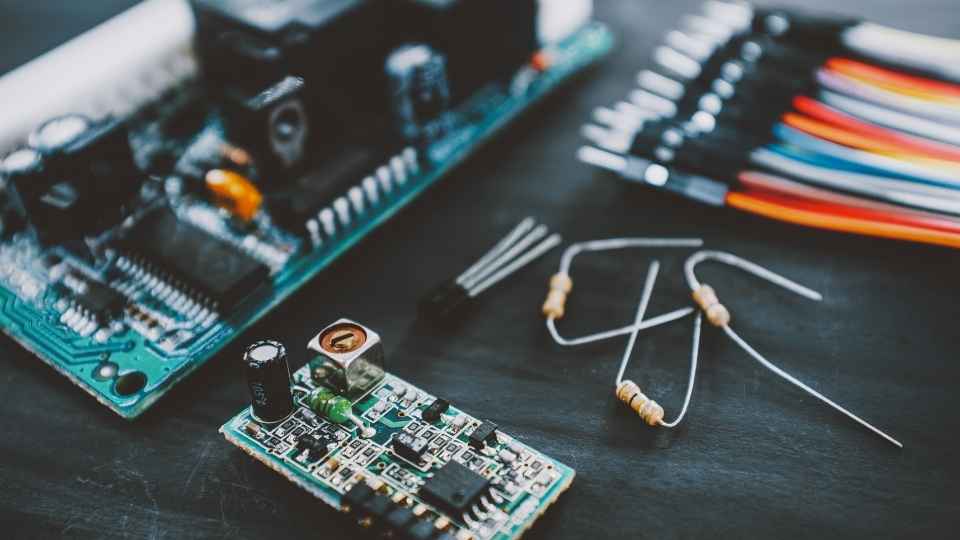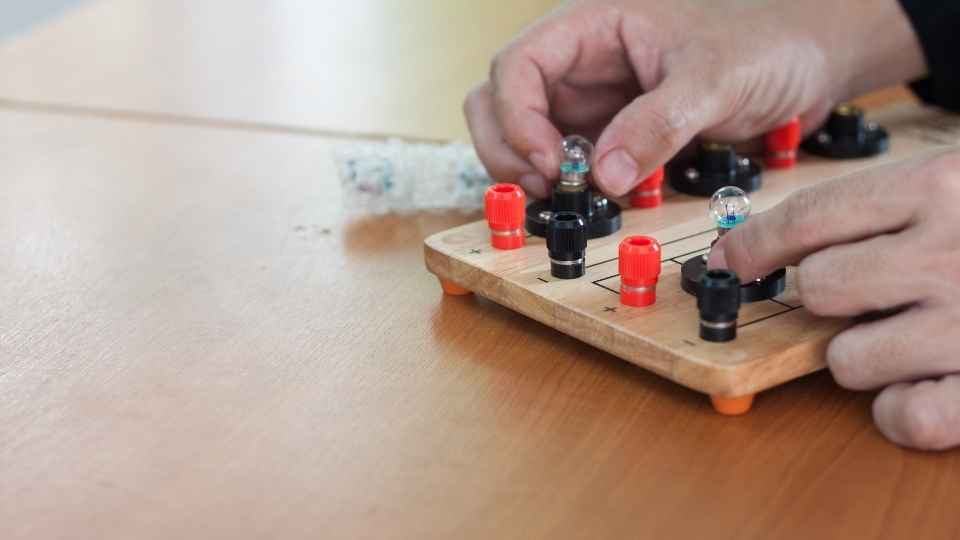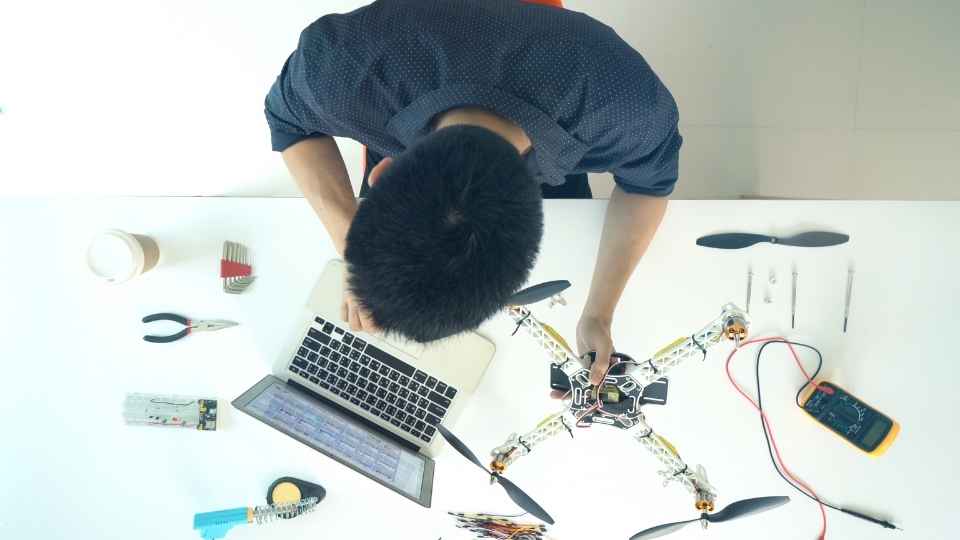
In the vast realm of electrical engineering, one fundamental question continues to intrigue and challenge us: how do we generate and tune frequencies?
This article delves into the intricate world of oscillators and timers, unraveling their inner workings and shedding light on the techniques employed by engineers to manipulate waveforms.
From exploring frequency tuning methods to demystifying crystal oscillators and phase-locked loops, we will embark on a journey that combines technical expertise with practical applications.
So fasten your seatbelts as we dive into this fascinating realm where theory meets reality.
Key Takeaways
- Waveform generation techniques like PWM and DDS are used to create precise waveforms with specific frequencies.
- Frequency tuning methods involve the use of variable capacitors and inductors to adjust the frequency of oscillators.
- 555 timers are widely used for generating accurate time delays and frequencies, and their output frequency can be adjusted by modifying external components.
- Crystal oscillators rely on the piezoelectric properties of crystals to generate precise frequencies and are commonly used in applications that require precise timing.
Waveform generation is a fundamental process in the field of electronics. It involves creating and manipulating different types of waveforms to generate desired frequencies.
Electrical engineers or electronics engineers are trained to understand complex concepts and communicate them effectively. They provide in-depth explanations of waveform generation, frequency tuning, 555 timers, crystal oscillators, and phase-locked loops using technical terminology and precise descriptions.
These professionals approach problem-solving with logical thinking. They break down complex concepts into smaller components and analyze their functionality and interrelationships systematically.

Practical applications of frequency control are emphasized by electrical engineers or electronics engineers. They focus on applying their knowledge to real-world problems and designing functional systems. They highlight how oscillators and timers are used in various electronic devices, providing examples of their implementation in different industries where freedom to explore new ideas is valued.
Exploring Frequency Tuning Techniques
To explore different techniques for adjusting the frequency of an electronic signal, researchers have developed innovative methods that allow for precise and efficient tuning. Electrical engineers and electronics engineers are trained to understand complex concepts and communicate them effectively. They provide in-depth explanations of waveform generation, frequency tuning, 555 timers, crystal oscillators, and phase-locked loops using technical terminology and precise descriptions.
In this subtopic on frequency tuning techniques, let's explore some methods commonly used by engineers:
- Voltage-Controlled Oscillators (VCOs): These oscillators use a control voltage to adjust the output frequency.
- Digital Frequency Synthesizers: By manipulating digital signals through mathematical algorithms, these devices can generate frequencies with high accuracy.
- Programmable Timers: These timers offer flexibility in setting time intervals or generating periodic waveforms at specific frequencies.
- Direct Digital Synthesis (DDS): DDS uses a digital-to-analog converter to generate precise waveforms with adjustable frequencies.
These techniques have practical applications in various industries such as telecommunications, aerospace, and consumer electronics. For instance, they are used in cell phones for wireless communication and satellite systems for accurate frequency synchronization.
Unleashing the Power of 555 Timers
Unleashing the power of 555 timers allows for precise waveform generation and frequency control in electronic circuits.
These versatile integrated circuits provide various timer functionalities, such as pulse width modulation, oscillation, and timing functions.
They are widely used in applications such as LED lighting, motor control, and audio tone generation, showcasing their practicality and effectiveness in designing functional systems across different industries.

Timer Functionalities Explained
One important aspect of timer functionalities is the ability to program and control specific time intervals for various tasks. Electrical engineers or electronics engineers are trained to understand complex concepts and communicate them effectively. They provide in-depth explanations of waveform generation, frequency tuning, 555 timers, crystal oscillators, and phase-locked loops using technical terminology and precise descriptions.
In discussing timer functionalities, it is essential to consider their practical applications. Oscillators and timers play a crucial role in various electronic devices across different industries. Some examples include:
- Timing circuits in appliances: Timers are used in appliances such as microwave ovens and washing machines to control cooking or cleaning cycles.
- Communication systems: Oscillators generate stable frequencies that enable reliable transmission and reception of signals in telecommunication systems.
- Industrial automation: Timers are utilized for precise timing operations in assembly lines, robotics, and process control systems.
- Medical equipment: Oscillators ensure accurate timing in medical devices like heart rate monitors or infusion pumps.
Electrical engineers' systematic approach allows them to analyze the functionality and interrelationships of these components while focusing on designing functional systems for real-world problems.
Popular Timer Applications
When considering popular timer applications, it is important to recognize their significant role in various industries and electronic devices. Electrical engineers or electronics engineers are trained to understand complex concepts and communicate them effectively. They provide in-depth explanations of waveform generation, frequency tuning, 555 timers, crystal oscillators, and phase-locked loops using technical terminology and precise descriptions. Their analytical and logical approach allows them to break down complex concepts into smaller components and analyze their functionality and interrelationships.
Emphasizing practical applications, these engineers focus on applying their knowledge to real-world problems and designing functional systems. They highlight the practical applications of frequency control by discussing how oscillators and timers are used in various electronic devices. For example, they may explain how timers are utilized in appliances like microwave ovens or how crystal oscillators play a crucial role in maintaining accurate timekeeping in computers.
Transitioning into the subsequent section about 'tips for timer troubleshooting', it is important to understand common issues that arise during the operation of timers and how to resolve them efficiently.
Tips for Timer Troubleshooting
To effectively troubleshoot timers, it is essential to have a comprehensive understanding of their components and functions. Electrical engineers or electronics engineers are trained to understand complex concepts and communicate them effectively. They would likely provide in-depth explanations of waveform generation, frequency tuning, 555 timers, crystal oscillators, and phase-locked loops using technical terminology and precise descriptions. Their writing would demonstrate a systematic approach, breaking down complex concepts into smaller components and analyzing their functionality and interrelationships.

Here are four tips for troubleshooting timers:
Check power supply: Ensure that the timer is receiving the correct voltage and current to operate properly.
Verify connections: Inspect all connections between the timer and other components for loose or faulty connections.
Test input signals: Use an oscilloscope or logic analyzer to verify that the input signals are being received correctly by the timer.
Examine timing parameters: Review the timing specifications of the timer to ensure they meet the desired requirements.
Demystifying Crystal Oscillators
Crystal oscillators are a critical component in generating accurate and stable frequencies for various electronic devices. Electrical engineers or electronics engineers, with their understanding of complex concepts, can provide detailed explanations of waveform generation, frequency tuning, 555 timers, crystal oscillators, and phase-locked loops using technical terminology and precise descriptions.
They approach these topics analytically and logically, breaking down complex concepts into smaller components and analyzing their functionality and interrelationships.

Highlighting practical applications of frequency control is also important to them as they focus on applying their knowledge to real-world problems and designing functional systems. For example, crystal oscillators are used in communication devices like smartphones to ensure accurate timing for data transmission.
Understanding the inner workings of phase-locked loops further enhances our understanding of how frequencies are generated and controlled in electronic devices.
Understanding the Inner Workings of Phase-Locked Loops
Phase-locked loops (PLLs) are complex electronic circuits used to generate and control frequencies in various applications.
Their inner workings involve a loop filter, which is responsible for filtering noise and adjusting the phase of the output signal, and phase detection techniques, such as frequency dividers or mixers, used to compare the input and output phases.
Understanding these components and their interactions is crucial for designing efficient PLL systems that can accurately synchronize signals in communication systems, audio devices, and many other electronic systems.
Loop Filter Design Considerations
When designing a loop filter for oscillators and timers, it is essential to carefully consider various factors to ensure optimal performance. Electrical engineers or electronics engineers are trained to understand complex concepts and communicate them effectively. They would likely provide in-depth explanations of waveform generation, frequency tuning, 555 timers, crystal oscillators, and phase-locked loops, using technical terminology and precise descriptions.
To design an effective loop filter, engineers must consider the following:

- Loop bandwidth: The filter's bandwidth determines its response time and affects the stability of the system.
- Phase margin: This parameter indicates the system's stability margin and should be carefully chosen to prevent instability.
- Filter order: The order of the filter determines its complexity and trade-offs between filtering performance and circuit implementation.
- Noise rejection: A good loop filter design should suppress noise from external sources while maintaining accurate frequency control.
Phase Detection Techniques Used
Phase detection techniques used in loop filters are crucial for accurately measuring and comparing phase differences between signals. Electrical engineers or electronics engineers, trained to understand complex concepts and communicate effectively, provide in-depth explanations of waveform generation, frequency tuning, 555 timers, crystal oscillators, and phase-locked loops. They employ technical terminology and precise descriptions to convey their knowledge.
With an analytical and logical approach, they break down complex concepts into smaller components and analyze their functionality and interrelationships. Emphasizing practical applications, electrical engineers or electronics engineers focus on applying their knowledge to real-world problems and designing functional systems. They highlight the practical applications of frequency control by discussing how oscillators and timers are utilized in various electronic devices.
Examples of their implementation can be found across different industries.
Advanced Techniques for Frequency Control
One effective approach to achieving precise frequency control involves the utilization of advanced techniques that enhance the accuracy and stability of oscillators and timers. These techniques, employed by electrical and electronics engineers, ensure reliable waveform generation and frequency tuning in various electronic devices.
Some key methods involved in advanced frequency control include:
Waveform Generation: Engineers use techniques such as pulse-width modulation (PWM) or direct digital synthesis (DDS) to create precise waveforms with specific frequencies.
Frequency Tuning: Engineers employ components like variable capacitors or inductors to adjust the frequency of oscillators, allowing for fine-tuning.

555 Timers: These integrated circuits are commonly used for generating accurate time delays and frequencies due to their versatility and ease of use.
Crystal Oscillators: These highly stable oscillators rely on the piezoelectric properties of crystals to generate precise frequencies.
These advanced techniques find practical applications in a wide range of industries, including telecommunications, aerospace, medical devices, and consumer electronics. For example, crystal oscillators are used in GPS systems for accurate timing synchronization.
Frequently Asked Questions
Can Oscillators Be Used to Generate Frequencies Other Than Sine Waves?
Yes, oscillators can generate frequencies other than sine waves. They can produce square waves, triangle waves, and sawtooth waves by adjusting the waveform shape using different circuit configurations or by applying filtering techniques.
Frequency tuning techniques play a crucial role in ensuring the accuracy of waveform generation. By adjusting the frequency of oscillators or timers, engineers can fine-tune signals to meet specific requirements and achieve desired outcomes in various electronic applications.
What Are Some Common Applications of 555 Timers in Frequency Generation?
Some common applications of 555 timers in frequency generation include pulse width modulation, astable multivibrator circuits, and time delay circuits. They are widely used in various electronic devices and industries for their versatility and reliability.
How Do Crystal Oscillators Differ From Other Types of Oscillators?
Crystal oscillators differ from other types of oscillators due to their high stability and precision. They utilize the mechanical vibrations of a crystal to generate a highly accurate frequency, making them ideal for applications that require precise timing or frequency control.

What Are the Advantages and Disadvantages of Using Phase-Locked Loops for Frequency Control?
Phase-locked loops (PLLs) offer advantages such as precise frequency control, stability, and the ability to synchronize with external signals. However, they can be complex to design and require careful tuning for optimal performance.
 Basic Electronics ConceptsEssential ToolsCircuit Design BasicsMicrocontrollersDIY Electronics ProjectsRoboticsPrivacy PolicyTerms And Conditions
Basic Electronics ConceptsEssential ToolsCircuit Design BasicsMicrocontrollersDIY Electronics ProjectsRoboticsPrivacy PolicyTerms And Conditions
